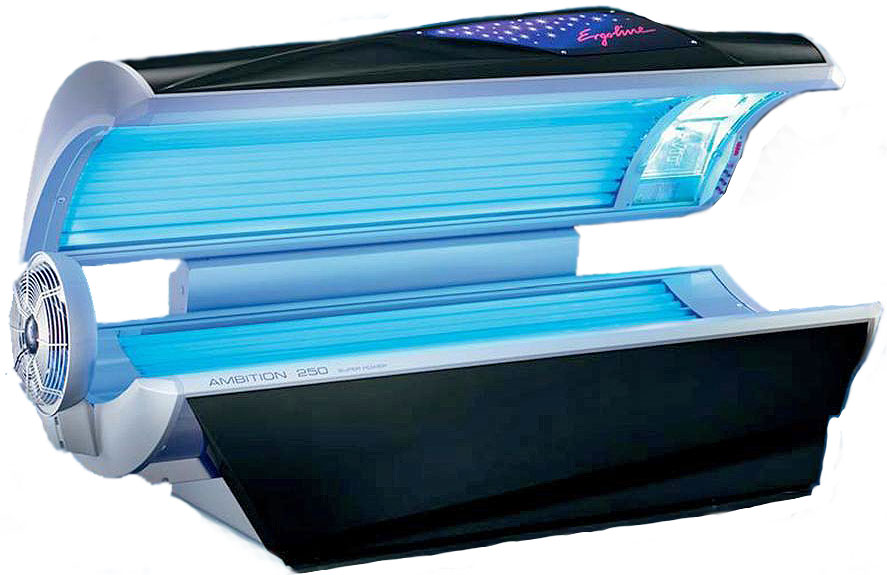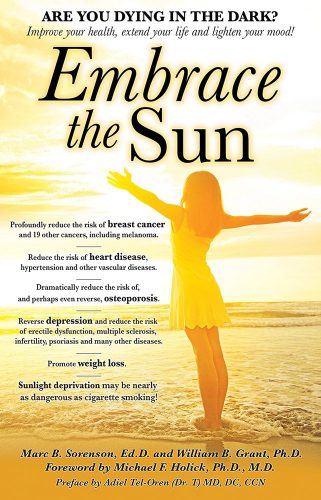Latitude, sunlight, and covid-19 by Marc Sorenson, EdD
Latitude, when compared to disease and disability, is an attention catcher. First of all, why would latitude be important? Is it because latitude itself creates disease? Is it because different latitudes lead to different temperatures? Could it be different distances from the magnetic poles are involved in human physiology? No, none of those answers is correct, yet, there is a simple answer to the link between latitude and disease. That answer is sunlight and vitamin D. Low latitudes (closer to the equator) receive much more sunlight, and sunlight is more direct much of the year.
A study of latitude backs the efficacy of sunlight, and possibly vitamin D, on reducing the risk of Covid-19. This was a large, study, drawing reliable data from 88 countries. The researchers compared the countries for Covid-19 death rates and then compared them for the latitude.
The results of Covid-19 death rates compared to latitude.
Highly significant, positive correlations were found between lower mortality rates from Covid-19 and a country’s proximity to the equator. The researchers stated that their evidence suggested a direct correlation between sun exposure and reduced mortality. They also assumed that vitamin D was the photoproduct of sunlight that lowered the risk of Covid-19.
This was a good, timely study in that it established sunlight as a prophylactic for covid-19. Many studies had previously mentioned vitamin D as the primary blood measure to reduce risk of the Covid-19, but none has mentioned latitude as a factor to furnish proof. In addition, neither does this study really furnish proof. That is because the only study that will prove the relationship would be a vitamin D-supplement study.
Other research,which links vitamin D levels to reduced Covid-19 mortality, but does not mention latitude as a factor.
Another recent study on the association of vitamin D levels to covid-19 survival shows promise for vitamin D. It states that fourteen observational studies show that high D levels inversely correlate with the incidence or severity of Covid-19. Yet, we should always remember that sun exposure on skin produces 90% of the vitamin D levels in most populations. Furthermore, 20 minutes of full-body summer sun exposure at midday produces up to 20,000 IU of vitamin D.
Finally, a word about sunbeds (tanning beds)
Finally, realize that sunbeds (tanning beds) produce vitamin D and enhance health. In addition, it is likely they would also reduce Covid-19. Sunbeds produce vast quantities of vitamin D. People in Canada who use sunbeds have the highest levels of vitamin D in the country, especially in winter. Moreover, a 20-year study demonstrated that both sun exposure and sunbed exposure reduced the risk of death. Women who used sunbeds were 23% less likely to die from any cause than women who did not use them. Another advantage is that latitude does not matter with sunbed use.
From the available research, it is evident that sunlight and vitamin D are protective against Covid-19. Sunlight exposure at midday, or sunbed use, are always the best sources, since sunlight exposure produces many health benefits beyond vitamin D.
For more information on the benefits of sunlight, visit Sunlight Institute, and read Dr. Marc Sorenson’s book, Embrace the Sun.
Sun exposure. By Marc Sorenson, EdD…
Endometrial cancer, also called corpus uterine cancer, is a reproductive cancer that takes the lives of many women. There are 60,050 new cases yearly from endometrial cancer and there are 10,470 deaths. Like many cancers such as breast and prostate cancer, sun exposure may have remarkable protective effects that should not be ignored.
Endometrial cancer mortality rates were found to be strongly inversely correlated with sun exposure in Dr. William Grant’s ecological studies.[1] [2] Other research, using Spanish data, found an inverse correlation between endometrial cancer mortality and sun exposure assessed by using latitude as an index of sun exposure—higher latitude means less sun exposure, which means greater cancer risk.[3] Corroborating this finding was research from Sweden; this 15.5-year study showed a 20% decrease in the risk of endometrial cancer among women who sunbathed in the summer, and a 40% decrease in risk in those who used a sunbed more than three times per year.[4] When the data was adjusted for confounding factors such as body-mass index and physical activity, the decrease in the risk of endometrial cancer was 50%!
The takeaway from this information is this: Don’t be taken in by the anti-sun cabal. Read all the facts before making a decision. And, always take care not to burn, whether in the sun or in a sunbed.
[1] Grant WB. An estimate of premature cancer mortality in the U.S. due to inadequate doses of solar ultraviolet-B radiation. Cancer. 2002 Mar 15;94(6):1867-75.
[2] Grant WB, Garland CF. The association of solar ultraviolet B (UVB) with reducing risk of cancer: multifactorial ecologic analysis of geographic variation in age-adjusted cancer mortality rates. Anticancer Res. 2006 Jul-Aug;26(4A):2687-99.
[3]Grant, WB. An ecologic study of cancer mortality rates in Spain with respect to indices of solar UVB irradiance and smoking. Int J Cancer 2007;120:1123-28.
[4] Epstein E, Lindqvist PG, Geppert B, Olsson H. A population-based cohort study on sun habits and endometrial cancer Br J Cancer. 2009;101(3):537-40.
By Marc Sorenson, EdD. Sunlight Institute…
Canada has a long season each year in which vitamin D from sunlight is not available. Due to the northern latitude of Canada, May through October is the only period when vitamin D can be produced in response to sun exposure to the skin. Therefore, a new press release from the Vitamin D Society recommends to protect health by building up vitamin D during the summer. Vitamin D from the summer sun helps to prevent serious diseases such as cancer, cardiovascular diseases, diabetes, multiple sclerosis and others.
Dr. Reinhold Vieth, the scientific advisor for the Society, states the following: We often assume that the health benefits of sunshine are solely due to vitamin D, but that is not proven yet. In other words, it is likely that sunshine does more for our bodies than just produce vitamin D.”
Dr. Vieth is correct. Vitamin D is only one of several products of sun exposure. Others are nitric oxide, which helps prevent vascular problems, and serotonin and endorphins that enhance mood. It is likely that there are many more products of sun exposure that enhance human health.
The Society recommends 6 guidelines for safely enjoying the sun and its health benefits:
- Be moderate, and don’t burn.
- Sun exposure can produce vitamin D only during the mid-day hours, so be outside between 10 AM and 4 PM.
- Know your skin type and risk of burning. Red hair and very light skin predict a greater risk of burning. (Also remember that dark skin needs more sun exposure to produce vitamin D).
- A gradual build-up of a tan protects the skin from burning.
- When the skin begins to redden, it is time to stop the sun exposure.
- Frequent but shorter sun exposure times are better for producing vitamin D.
Since about 35% of all Canadians do not meet suggested vitamin D requirements, sun exposure is essential to reverse that statistic.
So Canadians, safely enjoy the sun this summer!
To read the entire press release, go to this link: http://www.vitamindsociety.org/press_release.php?id=44
By Marc Sorenson, EdD…
Anaphylaxis, or anaphylactic shock, is an extreme allergic reaction to a protein to which a person has been previously exposed. It is characterized by a profound drop in blood pressure, severe itching and hives, and breathing difficulties. Untreated, it can be lethal. A common cause is bee sting, although many drugs and foods trigger reactions in individuals.
Although anaphylaxis has many causes, one of the major associations with the reaction is sunlight, being much more prevalent in areas with less sunlight.[1] [2] [3] Interestingly, the frequency of hospital admissions for the condition has increased 5-7 fold in the last 10-15 years, although death from anaphylaxis has not increased.[4] That could be due to increasingly fast response to the condition by medical personnel.
Other research indicative of an association of sunlight deficiency to anaphylaxis involves the use of the anti-anaphylaxis drug, Epipen. When geographical location in the USA is compared to the number of prescriptions for the drug, a strong north-south gradient is apparent, [5] with the highest rates in Massachusetts and the lowest in Hawaii. People residing in southern states have about 25-30% of the risk of those residing in the New England. The same relationship is observed in Australia, where there EpiPen prescriptions are more frequent in the south than the north[6] as are hypoallergenic formula prescriptions.[7] (In Australia, the south is colder and has less sunlight, due to being in the southern hemisphere).
A similar relationship in the U.S. is shown with visits to the emergency room for acute allergic reactions, including anaphylaxis, especially food-induced anaphylaxis.[8] The northeast region had more visits than the South. These studies establish that sunlight is protective against this potent reaction. Other research shows a similar geographic gradient with higher frequencies recorded in areas of little sun exposure,[9] such as those in children residing in northern countries.[10]
Regular, non-burning sunlight is an essential ingredient in the vibrant-health recipe for ourselves and our children. Embrace the sun!
[1] Tejedor-Alonso M A, Moro-Moro M, Múgica-García MV. Epidemiology of Anaphylaxis: Contributions from the Last 10 Years. J Investig Allergol Clin Immunol. 2015;25(3):163-75.
[2] Mullins RJ, Camargo CA. Latitude, sunlight, vitamin D, and childhood food allergy/anaphylaxis. Curr Allergy Asthma Rep. 2012 Feb;12(1):64-71.
[3] Rudders SA, Camargo CA Jr. Sunlight, vitamin D and food allergy. Curr Opin Allergy Clin Immunol. 2015 Aug;15(4):350-7.
[4] Tejedor Alonso MA, Moro Moro M, Múgica García MV. Epidemiology of anaphylaxis. Clin Exp Allergy. 2015 Jun;45(6):1027-39.
[5] Camargo, C. et al. Regional differences in EpiPen prescriptions in the United States: the potential role of vitamin D. J Allergy Clin Immunol 2007;120:128-30
[6] Mullins RJ, Clark S, Camargo CA Jr. Regional variation in epinephrine autoinjector prescriptions in Australia: more evidence for the vitamin D-anaphylaxis hypothesis. Ann Allergy Asthma Immunol. 2009 Dec;103(6):488-95.
[7] Mullins RJ, Clark S, Camargo CA Jr. Regional variation in infant hypoallergenic formula prescriptions in Australia. Pediatr Allergy Immunol. 2010 Mar;21(2 Pt 2):e413-20.
[8] Rudders SA, Espinola JA, Camargo CA Jr. North-south differences in US emergency department visits for acute allergic reactions. Ann Allergy Asthma Immunol. 2010 May;104(5):413-6.
[9] Tejedor Alonso MA, Moro M, Múgica García MV. Epidemiology of anaphylaxis. Clin Exp Allergy. 2015 Jun;45(6):1027-39.
[10] Mullins RJ, Camargo CA. Latitude, sunlight, vitamin D, and childhood food allergy/anaphylaxis. Curr Allergy Asthma Rep. 2012 Feb;12(1):64-71.




